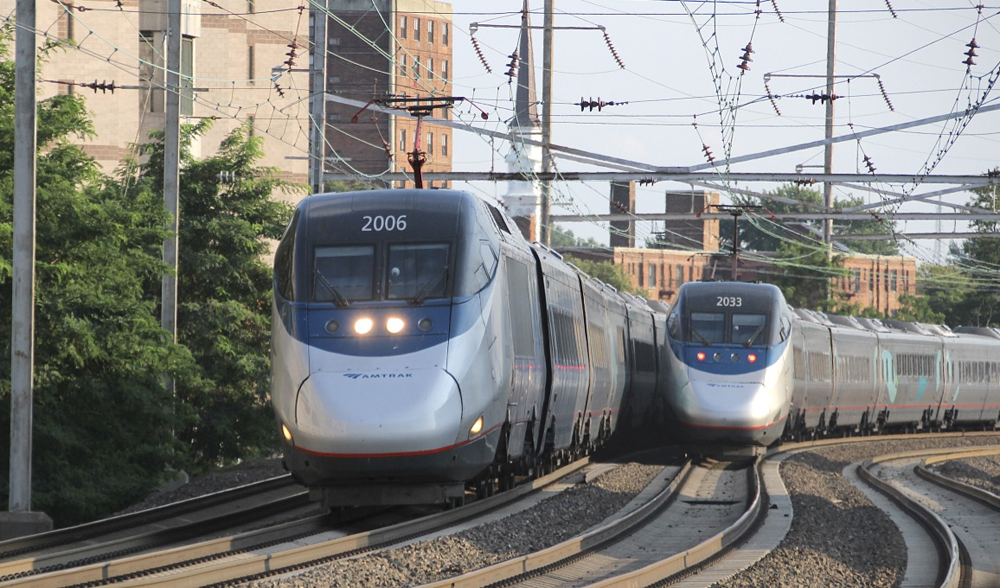
WASHINGTON — When President Joseph Biden touted the possibility of 1½ -hour trips between Washington, D.C., and New York in his April 30th address in Philadelphia for Amtrak’s 50th anniversary, he said elimination of three curves could potentially make that possible.
That prompted Trains News Wire to follow up with Amtrak on the current engineering and funding status of important Northeast Corridor infrastructure upgrade projects — and to check what is possible in terms of corridor travel times.
Biden was invited to ride Amtrak locomotive cabs a number of times on his thousands of treks to and from Washington, according to observers familiar with his travels [see “Joe Biden’s Amtrak connection,” News Wire, Sept. 25, 2020]. One of the slow zones he cited to an NBC-TV reporter and photographer during his years as a U.S. Senator from Delaware was the reverse curve at Elizabeth, N.J.
Amtrak says current speed limits on the two center tracks of the four tracks at Elizabeth — the two typically utilized by intercity trains — is 80 MPH for Acela and 70 MPH for Northeast Regionals.
“Passengers may notice trains operating slightly slower than that,” spokeswoman Beth Toll tells Trains News Wire. “This is due to a restrictive ‘approach limited’ signaling that governs the approach to Elizabeth, requiring trains to make a braking application.”
Amtrak’s version of positive train control, the Advanced Civil Speed Enforcement System, allows approaches to curves to have more tailored braking patterns, but the signal indication itself governs the speed here. Toll says this operating practice is being revisited so that trains like the new Acela can operate under ACSES’ enhanced features at maximum authorized speeds around curves.
Many other areas on today’s Washington-Boston route have speeds limited by existing infrastructure and track patterns. These include:
— The B&P Tunnel, actually three tunnels dating from 1873 under the streets of Baltimore, limiting trains to 30 mph;
— The complicated Zoo Interlocking junction with the Harrisburg-Philadelphia Keystone corridor, north of Philadelphia’s 30th Street Station;
— Approaches and tunnels under the Hudson and East rivers at New York;
— Harold Interlocking in Queens, the busiest rail junction in the U.S., where the Northeast Corridor meets the Long Island Rail Road’s main line and Port Washington Branch;
— The climb to the Hell Gate Bridge, the arch bridge that rises of 135 feet over the East River;
— 56 miles of 80-mph running on Metro North between New Rochelle, N.Y., and New Haven, Conn., and limits on drawbridges more than 100 years old;
— A twisting route along rural Connecticut’s shore;
— Curves through New London, Conn., and across the Thames River drawbridge;
— Restrictions caused by curves at the Mystic, Conn., and Providence, R.I., stations.
Straightening the right-of-way to eliminate these slow sections would require significant funding and require engineering studies that haven’t begun. Two long-overdue projects referenced on the above list are under way, but have a long lead time. For instance, engineering is in the final design stage to replace the B&P tunnels south of the Baltimore station by constructing new tunnels on a new route.
Amtrak’s Toll says, “Early construction activities, such as [structure] demolition, utility relocation, and bridge work are anticipated to be initiated in 2022 and 2023. Funding for tunnel construction has not yet been secured, but Amtrak’s legislative requests include funding to support construction activities. Pending sufficient funding being secured, the new tunnels are targeted for completion in 10 to 12 years.”
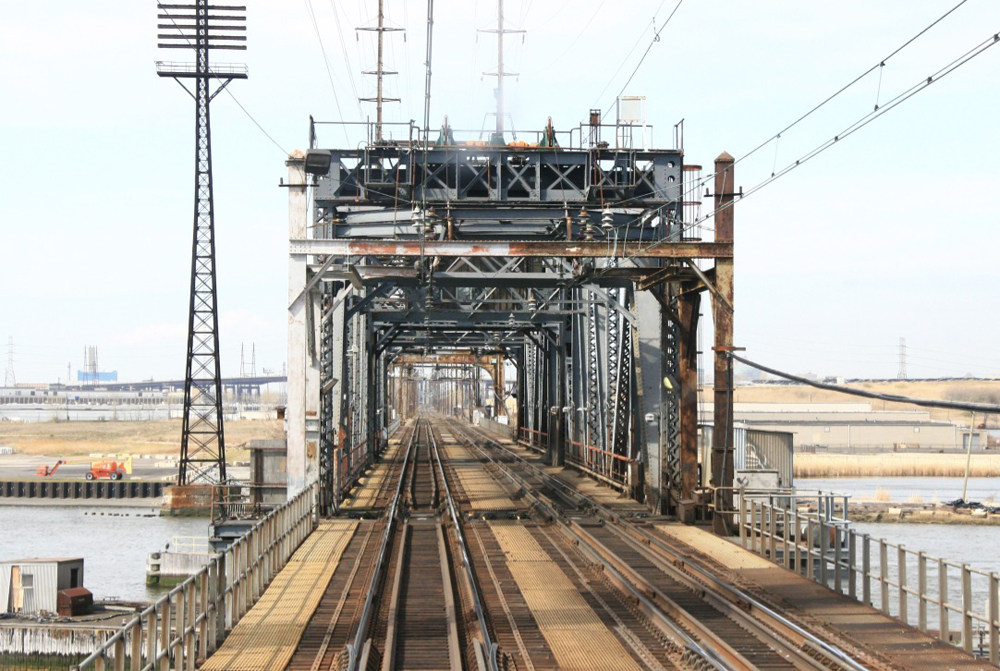
On the New Jersey approach to New York, the $1.8 billion North Portal Bridge replacement is now in the procurement phase “with the hope that a [construction] contract can be awarded by the end of calendar 2021,” says Toll. NJ Transit secured a Federal Transit Administration commitment for more than $765 million earlier this year and Amtrak will be kicking in up to $350 million. Once begun, the new bridge construction and track reconfiguration will take about five years. When finished, maximum authorized speeds will increase from 60 to 90 mph, with capacity expanded, maintenance streamlined, and reliability improved.
Maximum Acela speeds are 150 mph and the new Acelas will be able to reach 160 mph, but this is currently possible only on about 34 miles of track in Rhode Island and Massachusetts. They will also be able to attain those speeds when almost-completed catenary and track work is done in central New Jersey between Trenton and New Brunswick.
“Amtrak has investigated how to improve [right-of-way] to the maximum extent possible within the land use and regulatory environment it operates in,” Toll says. “However, funding is required to make these improvements. With investment, Amtrak can absolutely increase speeds and reduce trip times.”
So what are realistic goals for travel time? “With funding to replace obsolete infrastructure like the B&P Tunnel and additional targeted investments costing around $50 billion,” Toll predicts, “Amtrak can increase maximum speeds on most of the Northeast Corridor to 160 mph. Acela trip times could be reduced to 2 hours [from a current average of 2 hours, 50 minutes] between Washington and New York City, and 2 hours and 30 minutes from New York City to Boston [now 3:45]. A Washington-to-Boston journey would be 2 hours faster, and riding the Acela from Washington to Baltimore would take just 21 minutes,” she says.
The Northeast Corridor received federal financing for improvements in the 1960s when the Pennsylvania Railroad introduced the Metroliners, as well as periodic funding for better track and higher speeds under Amtrak. But more heavy lifting is needed to squeeze more minutes out of the fastest schedules.
— Updated at 12:30 p.m. on May 11 to correct running speed on Metro-North trackage to 80 mph.
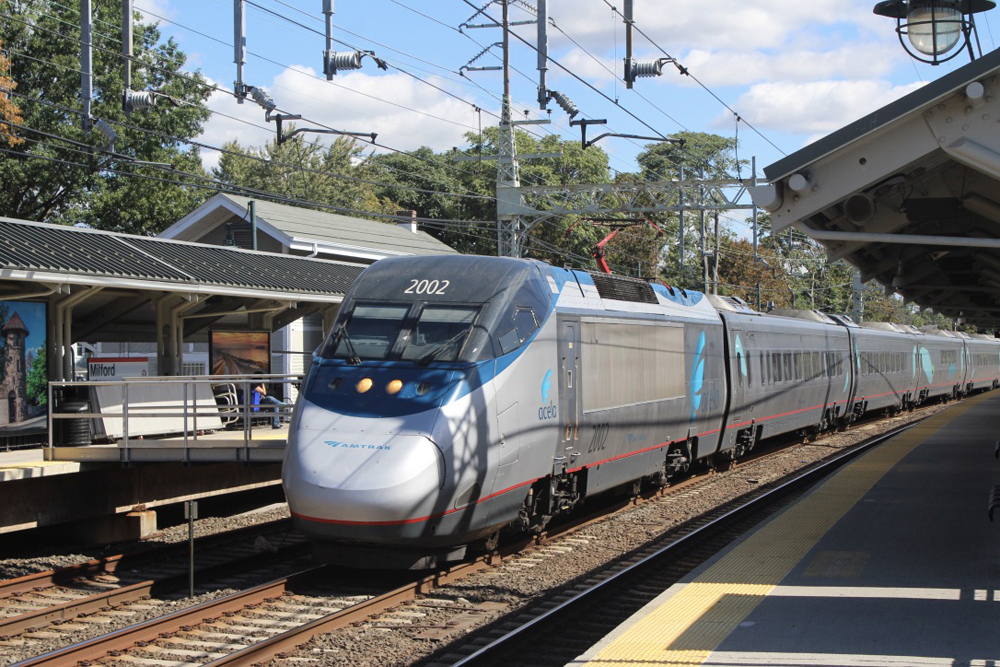






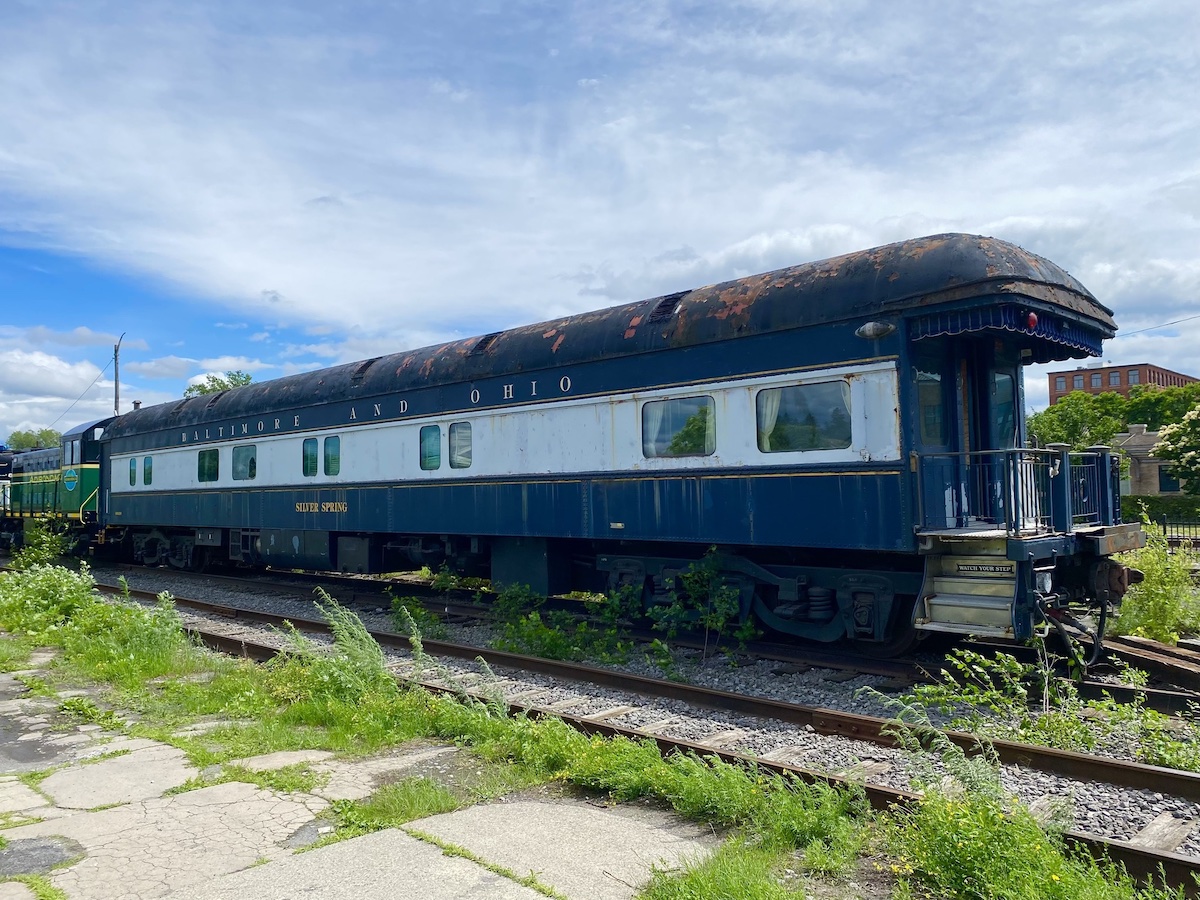
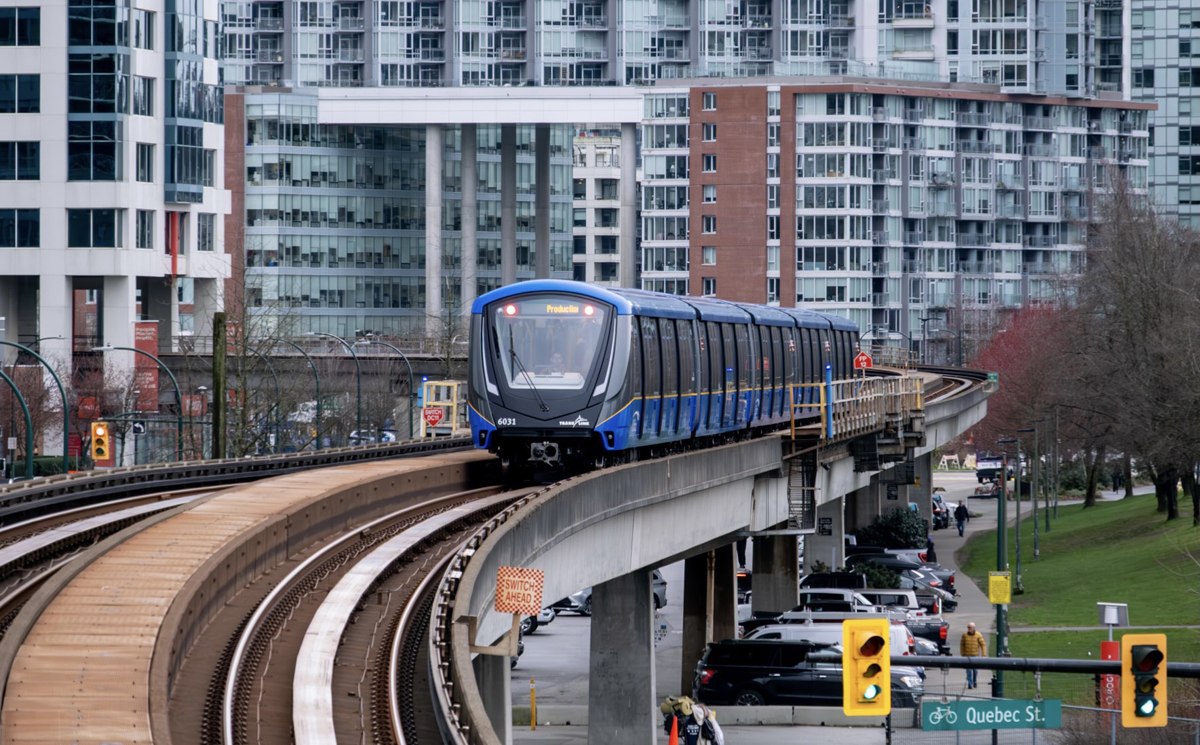
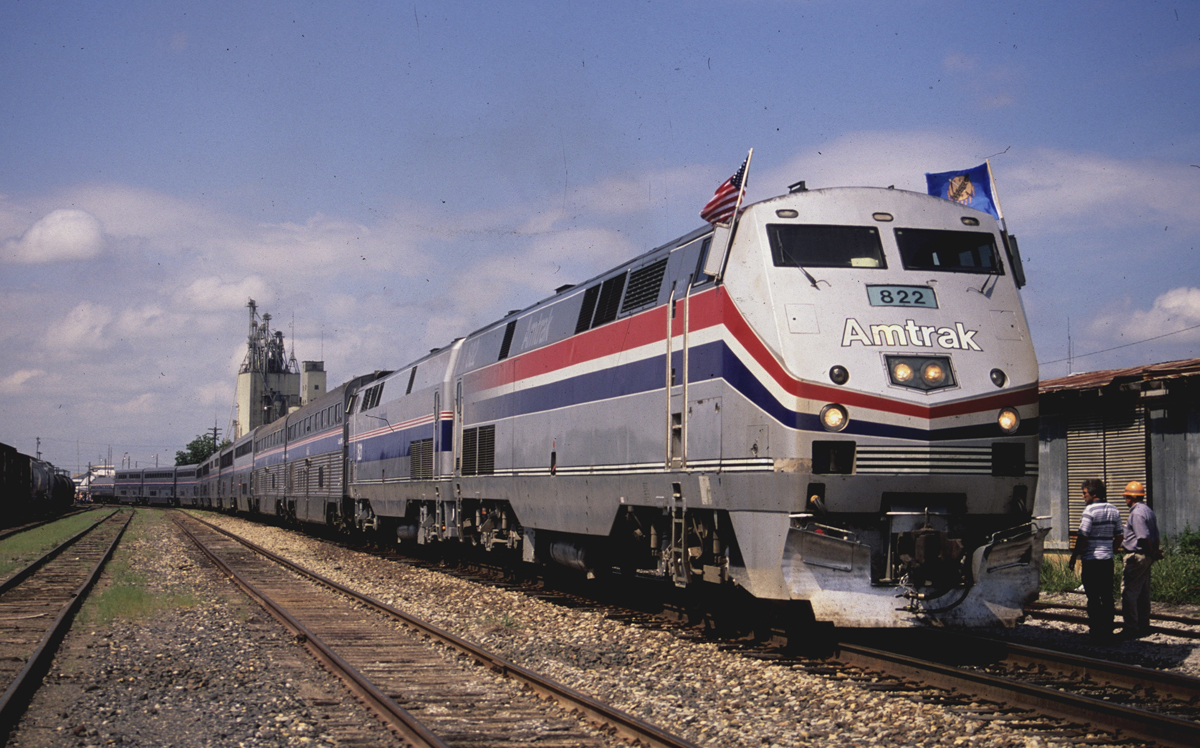
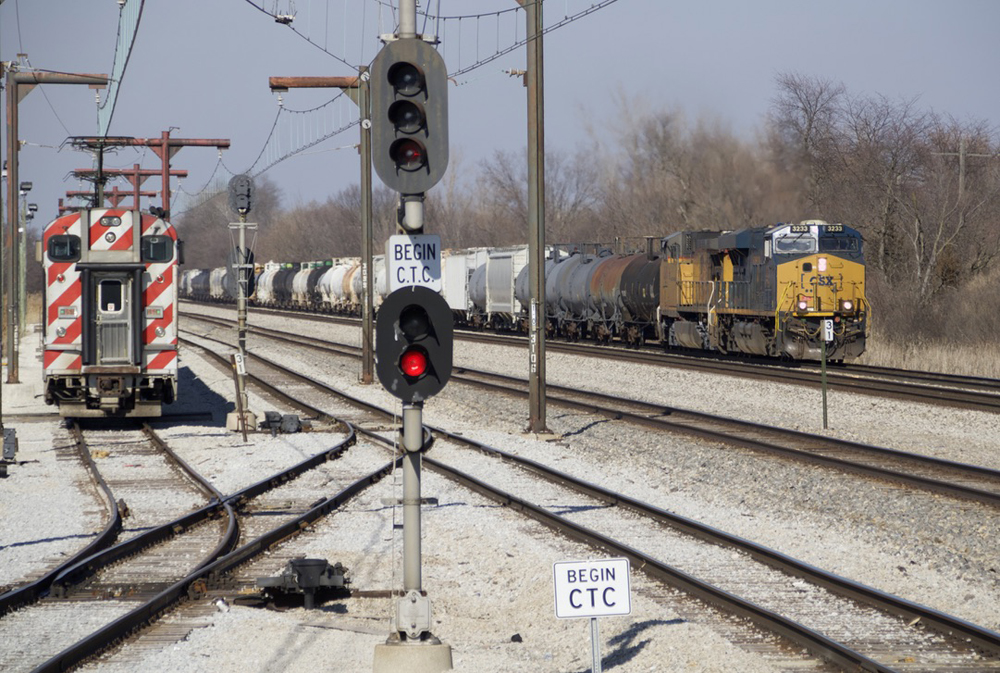




How about Amtrak funding their own tracks, then they wouldn’t have to blame the railroads and cry to congress for their performance issues, they seem to forget they pay to use the freight tracks.
What year it’s going to be completed?
When it’s going to be completed?
If Amtrak was actually led by a corporate management with railroad experience who benefit from the stewardship of a Board well versed in supporting passenger rail, priorities would easily be established and funded.
In essence, as even the federal trough is not unlimited, the priorities should be:
1) Build new Baltimore tunnels.
2) Build new Hudson River tunnels; repair original tunnels.
3) Repair East River tunnels.
4) Anything left over should be directed to complete the CREATE project to alleviate freight congestion in Chicago to the benefit of Amtrak and Metra.
President Biden should shut up about 90m running times NYP-WAS and instead concentrate on improving service outside the “sacred” NEC of fable and song. Capacity on the freight railroads needs to be restored, possibly through PPPs so it becomes a win-win for the passengers and the freights. We have three Democratic US Senators offering legislation that will allow Amtrak to take railroads to court for delays due to “freight train interference”. NO! Stop cursing the darkness and start lighting candles. Priority isn’t the problem. The lack of mainline track capacity and operating flexibility (frequent interlockings equipped with 60-80mph crossovers) is. Solve the capacity/operating flexibility problems and the problems of priority go away under normal operating conditions. Work to build that Mr. President and Mayor Pete and build train service outside the NEC unless you really believe that NEC stands for Nothing Else Counts.
I sincerely apologize to author and Trains “Passenger” columnist Bob Johnson. He certainly did include New London in this article.
Let’s all not forget how CT lawmakers, all or almost all Democrats including most famously Sen. Richard Blumenthal, killed what may be the last chance to reduce running times between Old Saybrook and Providence, namely the New London bypass. Funny the article makes no mention of the “crawl” through New London. I don’t have access to an Amtrak employees timetable but from several rides NYP-BOS between 2008 and 2019, speeds seemed to be at best in the 40-50 mph range.
If I remember correctly the current maximum speed between Midway and Fair interlockings is 130mph over approximately 25 miles. An increase of 15mph over that distance might shave maybe 3 to 4 minutes off the current scheduled time.
The outdated (85 years!) catenary between New York and Washington is a huge factor in limiting the speeds. So far, over the past 5 years or so Amtrak has upgraded about 25 miles between New Brunswick and Trenton with two types of high(er)-speed catenary, one of which will enable Acelas to achieve 145 mph or so, the other up to 160. At that rate of upgrading, coupled with the service disruptions it causes, you’re probably looking at 20 years or so for that portion of the NEC where track geometry permits those speeds.
Seeing as how the NEC runs through established, dense urban areas, relocating/straightening the right-of-way would cost tens of billions of dollars and displaced probably hundreds of residents and businesses. Not worth it, in my opinion.
Speed is a factor. Other factors include seervice frequency and seamless connectivity. That applies in the Northeast just as much as in Chicago or Los Angeles or anywhere else. Can someone buy a ticket for a connection from a Boston suburb to a Philadelphia suburb via MBTA, Amtrak and Septa? Not that I know of.
We’re half a century into Amtrak – and years into computerized reservations, smart phones, etc. I can use – and have used – my car’s Illinois Tollway I-Pass on turnpikes and bridges in Massachusetts and New York State. But I can’t buy a through ticket for Amtrak Hiawatha connecting to Chicago Metra. Maybe people are working on this issue as we speak. I’ve not heard anything.
It works in the UK. There are the multitude of privatized carriers – but one ticket or one railpass is all you need.
I think it is time that Congress remove the exemption the NEC has regarding PRIIA or eliminate PRIIA all together.